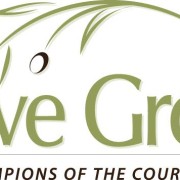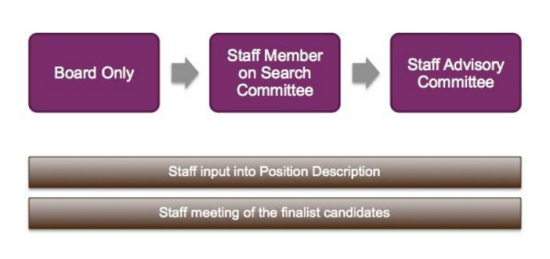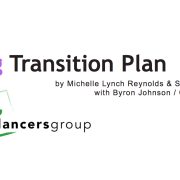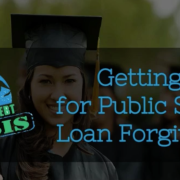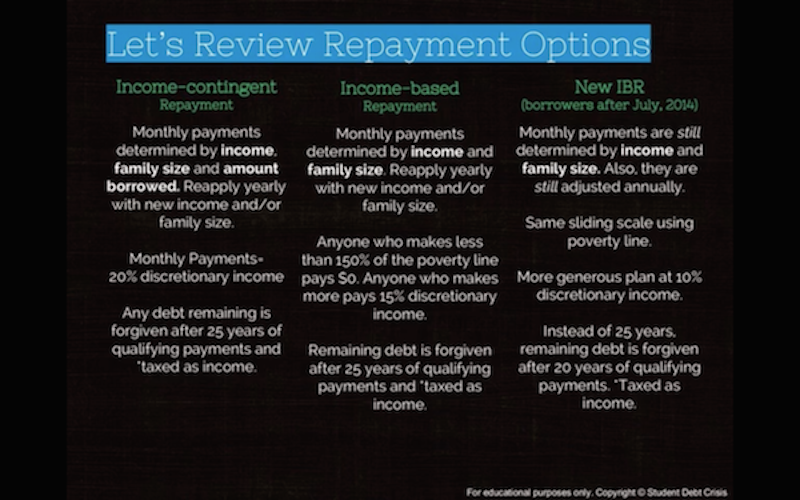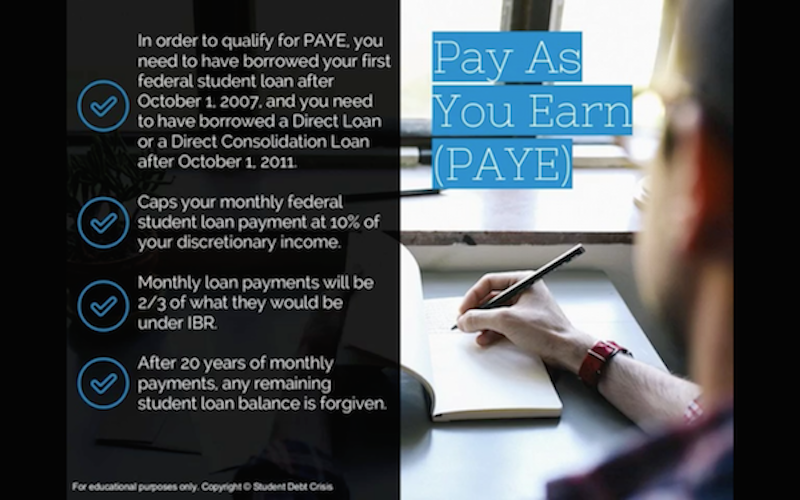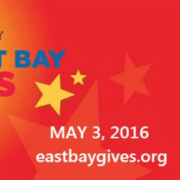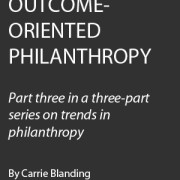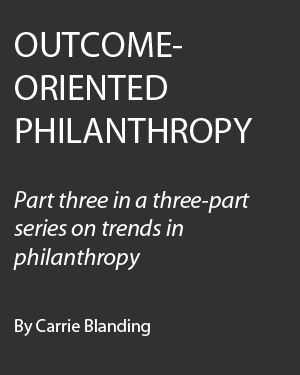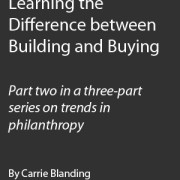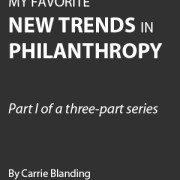In Times of Transition: Reflection Over Direction
/0 Comments/in Blog Salon: Transition Planning, Research and Development Leigh Lehman /by Leigh LehmanAs Dancers’ Group’s mentioned in their insightful Living Transition Plan, organizational transitions can be emotional. They can produce feelings of confusion, anxiety, excitement, hope, frustration, relief, or resentment. At the same time, a leadership change offers a fantastic opportunity for an organization’s constituents to recognize and honor its essential values and culture. It can also provide an important stretch of time for staffers to grow comfortable with the idea of change and prepare to enter the next era from a place of strength.
Over the past four years, I have had the opportunity to serve as interim director of three different arts nonprofits, and have come to deeply value the work in the same way I do international travel. I get to move to a new “country” and immerse myself in its customs and culture, learn the local language, and reflect on its inner workings. In exchange, my outsider perspective naturally generates questions and observations about the organization that can lead stakeholders to self-reflect and better define their own goals and intentions.
As Interim Director, I might introduce some unfamiliar ideas or approaches, but unless the organization is going through major turmoil, my job isn’t to provide long-term vision or institute big changes. Instead, I am there to encourage and support those who are living through—and most affected by—the transition. While staff at all levels can and should be leaders in succession planning, they also need support. Especially at smaller organizations with 15 or fewer employees, the loss of a leader can create significant extra work and stress for those who remain. But it also provides a chance for staffers at all levels to challenge or even reinvent themselves, to test out a new ideas, and to step into greater roles of responsibility. To become, in a word, more “leaderful” (a term introduced in the Living Transition Plan that has quickly entered my daily lexicon!). An Interim Director can help by listening hard, asking the right questions, and simply getting out of the way.
Right now I am wrapping up a six-month tenure at Southern Exposure, a local nonprofit that supports emerging visual artists. I just held my last one-on-one meeting with each of the four staff members, all of whom are highly accomplished, passionate workers. I asked them to revisit the list of 2016 goals they developed last fall, and reflect on the past six months by considering the following questions:
- Do you have any new insights or takeaways about your:
- Job responsibilities and overall role?
- Recent accomplishments?
- Potential (recognized or unrecognized)?
- Professional development or work style needs?
- Professional aspirations?
- Are there any new dynamics or realities that have developed during this transition that you hope continue into the future? Or any that you hope don’t continue?
- What kind of impression do you hope to make on the new ED? What actions or efforts on your part could help her form that desired impression?
I didn’t require them to write anything or formally answer each question (they have enough work on their plates already!). We just used the questions as a starting point, and I let them lead the way. The result was a series of rich conversations that left them feeling confident, empowered, and eager to welcome their new leader. They had a safe space to openly voice their hopes and dreams, I shared my observations about their strengths and challenges, and together we made a roadmap for the future. In addition, their honest feedback will inform my opening conversations with the new ED, as I can more easily share information and expectations that the staff might be shy to disclose to a new manager right off the bat. I can set the new leader up for success and provide the kind of valuable context that will enable everyone start off on solid ground.
I should note that while my outsider status has often been helpful in quickly cultivating trust and openness, an Interim promoted from within an organization can absolutely play the same crucial role in supporting staff and empowering them during the transition process. It just takes genuine listening, championing what is working well, and communicating with honesty and clarity.
Leadership transitions do not need to feel like lost time where employees are in limbo, full of anxiety and uncertainty. With the right kind support, staffers can use transition time productively to recognize and examine their own perspectives, and prepare to enter the organization’s next chapter from a place of strength and self-awareness.
ABOUT THE AUTHOR
Leigh Lehman has worked in the nonprofit arts sector for over 15 years. Since serving as Executive Director of 826 Valencia for five years, she has spent the last four years assisting various Bay Area nonprofits such as Headlands Center for the Arts and the David Brower Center through times of transition or leadership change. Currently, she is wrapping up an Interim Directorship at Southern Exposure. She also serves as Managing Director of the dance program Rhythm & Motion.
Tailoring the Transition Process: When to Engage Staff & Board
/0 Comments/in Blog Salon: Transition Planning, Research and Development, Resources Amy whittaker, Mona Jones-romansic /by Amy whittaker, Mona Jones-romansicOlive Grove has worked with over a hundred organizations on succession and transition planning over the past ten years and no two processes are the same. Some involve a sudden departure followed by a panicked hunt for an exact replica of the departing leader – or a unicorn of a person who has a rainbow of superior talents. Others involve a founder handing over their life’s work to a carefully vetted leader with nervous excitement and hope. And still others involve years of cultivating a staff member to learn the organization inside and out for a seamless transition. In any scenario, the process of transition and succession must be tailored to the unique needs of the board and staff, while representing the values of the organization.
The Living Transition Plan, drafted by Dancers’ Group and CompassPoint, provides a strong starting point for staff to take on the process of replacing a valued colleague. It outlines the key activities involved in any succession planning process, including:
- Defining your values: In order to find the right person for a role, the organization must first have a clear understanding of itself. Values should represent the historical and present patterns and actions of the organization. Here are two exercises to help you understanding your organizational values: Values Exercise and Historical Mapping Exercise.
- Gathering information: Information gathering helps an organization to understand its goals, priorities, opportunities and risks perceived by those within and outside of your organization. This information will directly inform the qualifications and immediate goals of the new hire.
- Mapping knowledge sharing: Some information lives only in the minds of the outgoing employee and organizations don’t always have a clear system for transferring that information. See our Knowledge Sharing Tool for a resource.
- Developing a Succession Planning document: Once you have defined your values, gathered information from internal and external resources, and captured the knowledge within the organization, the next step is to create a document for the transition of key roles in case of a sudden departure. As outlined in The Living Transition Plan, questions should explore: qualities of a leader; desired shifts in an organization’s culture / structure; financial impact of a transition; knowledge transfer; process for selection of a new employee; communication around the departure; training / onboarding; celebration of the outgoing employee; and other elements of the organization that will be affected by the transition.
- Executive Search considerations: Of course, a leader departing will have much greater implications for an organization than other staff members. Thought must go into the decision-making process for selecting the leader, communications to stakeholders, funders and partners, the role of the outgoing leader in the future, and how to involve staff in the process.
We have found that the last point – how to involve staff in the process – is crucial in ensuring a successful transition. This can take many forms but essentially staff involvement falls along a spectrum. We have provided a few examples to highlight the various possible forms of staff involvement in an Executive Search process. This spectrum can help you identify the best approach for involving your staff and board members based on your unique situation – especially for high impact searches, such as Executive Directors and CEOs. For case studies highlighting the spectrum click here.
The Board-Only Approach: The Board does not involve staff in the process and makes a unilateral decision on the new hire.
- This approach is best used when the hire is a staff member, rather than a leader, and the team was previously ineffective.
- For an executive transition, this approach is best used when an organization is in extreme situations of transition or turmoil and requires decisive leadership.
- Be cautious of this approach. Even in some instances of extreme turmoil, staff still has valuable input to contribute to the qualities of a new leader.
- Make sure the Board truly holds all of the valuable information before moving forward with this approach.
Staff member on Search Committee: A staff member is selected by the Board or elected by staff to join the Search Committee as a representative.
- This approach is best used when an organization has a cohesive staff that can elect a representative and establish a system for providing input throughout the process.
- This can be an effective approach if the board is a high-level advisory board and the staff member can bring complimentary insight on programs and operations.
- This approach ensures some staff involvement but requires that staff is bought-in to this process and trust their representative.
Staff Advisory Committee alongside a Search Committee: Staff form a committee of multiple representatives, or for a smaller staff, all staff members are involved throughout the entirety of the process.
- This approach is best used when staff can provide insight into the culture, history and future direction of the organization in a way the Board cannot.
- This is also a helpful approach during periods of organizational transition and growth, when a new staff member or leader will likely create major shifts to the organization’s strategy and direction.
- This can be an elected or appointed Committee of staff who have regular input and updates on the process and a high level of decision-making in the selection of the candidate.
- For a smaller staff, this can include a process for gathering input from all staff through meetings, surveys, or other methods.
Staff can always provide valuable input in a couple of ways, regardless of the organization’s dynamics:
- Developing position description: Whether input is gathered collectively or individually, staff brings an important perspective to the qualities needed in the new hire. Ensure the focus is not wordsmithing but rather making sure critical points are covered.
- Meeting with candidates: Whether it is a direct superior or the new organizational leader, provide those working with the new hire the chance to meet that person during the later stages of vetting.
It is important to recognize that the Board holds fiduciary responsibility and accountability to ensure strong leadership within the organization. While staff input is valuable and sometimes crucial to the success of the new hire, the Board always has the final decision-making power on the process and selection.
Ultimately, involving staff is a critical step in ensuring the success of the new hire after the search and onboarding processes are over. The level of input can vary and it is up to the Board and senior staff to determine how much input is required for an efficient yet supportive process.
For additional information on Olive Grove and resources for transition / succession planning, please see below.
From Out of Site to Youth Art Exchange: Moving Beyond the Founder
/0 Comments/in Blog Salon: Transition Planning, Research and Development Beth Rubenstein /by Beth RubensteinHow do you let go of something that you have created? For instance, that incredibly crafted scene in a story, that you love but know may not completely fit anymore; or that dynamic painting series that you treasure but you know is not your future?
In June 2000, my close friend and I concocted a youth arts center that would bring a multi-disciplinary and community engagement approach to arts education. We envisioned a place that valued teenagers and put them in charge as they worked in the arts. Thirteen years later I was able to sneak away, leaving Out of Site in the hands of its community – its staff, faculty, students and alumni – along with a new executive director.
Small to mid-size nonprofits (under about $750,000 in annual budget) particularly struggle to create a lasting institution, one that is bigger than its founder, where the organization and its members successfully hold the values, vision and mission. As a founding executive director, I rode all the ups and downs for 13 years – the joys and the challenges: from the hiring of our first staff person, to the first employee firing, to the flush financial years and the lean years with the fears of not making payroll, to the awards and accolades, to the frustrating partnerships, and to all the complexities and emotions of working in a community that values collaboration and reflection.
The founder carries plenty. How could I let go and walk away? How could I leave the organization in a healthy position and myself feeling proud, calm and grateful?
I had attended multiple succession planning workshops, but frankly there was always the assumption of a bigger institution, a stronger board, a more robust organizational structure. I’d leave these meetings overwhelmed. How could Out of Site accomplish this transition without crumbling? In the difficult moments of our history, I felt that Out of Site was merely a house of cards – beautiful but fragile, and only I could keep it together. Was there a solid structure outside of me that could hold Out of Site together?
To figure this out, I needed to personally let go. I needed to value all those ups and downs and that knowledge I had gained. And, then I had to separate. I needed to allow others to step in. For me this took the support of an executive coach as well as a clarity about my own next steps.
Also, when I decided that it was time to leave, Out of Site was in a good spot: we had just finished a strategic plan developed by board, staff, faculty and youth. We had some steady, multi-year funding. Coincidentally, we were beginning a process to change our name.
After first telling my Board Chair, I shared the news with staff and then youth. All of this was very emotional. People were mad, surprised, scared, overwhelmed and intrigued. It was the youth who were most positive and excited – they saw me jumping off into new adventures. The adults were supportive but also understandably concerned about how the transition would affect them. There were a lot of emotions to process!
The Board needed to figure out the timeline and the transition method. After hours and hours of discussion, they made the decision to hire a Transition Consultant while also giving substantial raises to the top staff, in recognition that this would be a full year. This was all a financial stretch. But the Consultant spoke of using this process as a capacity-building time. She saw transition as a time where staff and board could step up and redefine their roles and responsibilities. Everyone found this exciting.
I was peripheral to this process. It was shocking and a bit sad for me at first, but then a relief to see the strength of the underlying structure of the organization. With coaching, I saw how my absence from the process would ensure a successful hiring outcome – no new executive director wants the founder/former ED looking over her/his shoulder. Also, this was balanced by the appreciations and accolades I was receiving: I worked hard to take in all these supportive comments and conversations.
The Board, staff and I were savvy and strategic about how we spoke to our partners and funders about the transition. And once the fabulous new executive director was hired, we held a celebratory party. Informal but also ceremonial: this was the handover. I felt deeply appreciated and honored – friends, partners, funders were all there. I was able to thank everyone including board, staff, youth and partners; and, then introduce my successor. She spoke to our community as its new director.
With a background in architecture, education and policy, Beth Rubenstein is currently a Legislative Aide to Supervisor John Avalos, of District 11 in San Francisco. She works on city budget, workforce development, children and youth policy, arts policy, and District 11 community development projects. She is the co-founder and was the long-time executive director of Youth Art Exchange (formerly Out of Site Youth Arts Center), which offers programs in visual and performing arts, and leadership development to San Francisco public high school youth. She has taught at the high school and college level, including at Yale College and Rhode Island School of Design. Beth has a BA in art history from Barnard College, Columbia University, and a Masters in Architecture from Yale University.
Beth is a 2012 – 2017 Koshland Civic Unity Fellow for the Excelsior neighborhood of San Francisco, awarded by the San Francisco Foundation in recognition of being a “Bay Area grassroots risk taker” and for taking on “the most stubborn neighborhood problems as a personal challenge and [working] collaboratively to overcome them.”
Transition Planning for All
/1 Comment/in Blog Salon: Transition Planning, Open Systems, Research and Development Michelle Lynch Reynolds /by Michelle Lynch ReynoldsThis past spring, Dancers’ Group completed a Living Transition Plan, a two-part document that looks to provide guidance and strategies for the organization to be resilient in the face of any future staff changes, and to serve as a resource for other entities to use as a template in their own transition planning.
The process to create our Living Transition Plan started in the fall of 2014 with funding from the Center for Cultural Innovation, as part of their NextGen Arts Leadership Initiative grant program for organizational support. When considering a project for this initiative, we asked ourselves:
If the executive director, or any vital staff, were to spontaneously combust or otherwise disappear from Dancers’ Group, what would we need to successfully lead the organization? What skill or knowledge gaps do we have? What new opportunities would this bring forward?
From these initial seeds, we crafted an idea for a staff-led transition plan.
Dancers’ Group is a hybrid service organization and presenter of performance opportunities whose mission is to promote the visibility and viability of dance. Our vision is one where dance is situated at the center of civic life and the ecosystem of the San Francisco Bay Area dance community is diverse, resilient, and artistically vibrant. I joined Dancers’ Group as its Program Director in 2012 and have a couple of years left (eek!) before I officially age out of being what the Center for Cultural Innovation would label a “NextGen Arts Leader” – those under the age of 35. I am also an alumnae of EAP’s fellowship program (2010-2011 cohort) and currently part of the Leadership Team.
It’s unusual for staff—let alone younger staff—to lead transition planning efforts, which are frequently board-driven and embarked upon when a staff change is imminent. Because no changes are on the horizon for Dancers’ Group, the plan is “living,” meaning that we will be revisiting and updating it as new ideas, needs and perspectives emerge.
Dancers’ Group wanted to take this opportunity to imagine a plan that would be useful for us as well as other entities in our vibrant and varied dance ecosystem, and beyond. As part of our identity as a service organization, we are always trying to consider how our internal capacity-building might be reflected out to our ecosystem. Think of what emerged as a workbook. A launching pad.
Below are three key takeaways—guiding principles—excerpted from the plan that we believe can support the transition planning work of dance entities of any shape or size.
Communication is vital. It seems obvious to say and yet it should be said, when change happens at an organization, it is critical be keep stakeholders informed. This communication can take many forms, and a priority will be to preserve and continue trust, even if the voice and primary leader of an organization has changed.
Transitions are emotional. Through any planning process or organizational change, respect and take care of the emotional well-being of those involved. This includes an outgoing staff-person, staff and board still at the organization, and the wide network of stakeholders, partner organizations, and even funders.
Recognize your cultural values. Change of leadership will certainly bring with it cultural changes in the office, impacting staff and the artists served. Dancers’ Group, for example, has developed organizational practices, the collection of which is our culture. Many of these practices came organically through the leadership of executive director Wayne Hazzard, and are further developed through the day-to-day interactions with the entire staff.
Dancers’ Group worked with CompassPoint’s Byron Johnson in the development of the Living Transition Plan, and he introduced us to the term “leaderful” (love it!) in relation to the organization’s staff. To feel leaderful means to be supported and empowered to practice and develop leadership skills. This project provided me a chance to exercise my leadership within Dancers’ Group at a level that was new to me. And, the plan that came out of this work encourages all of us to support leadership across the organization’s staff, in turn leading to greater agility and resilience when it comes time to face transitions big and small.
Download the full Living Transition Plan at dancersgroup.org/research
CalNonprofit Webinar: Public Service Student Loan Forgiveness
/0 Comments/in News, Research and Development, Resources Lauren Benetua /by Lauren BenetuaFor many of us who work in the nonprofit sector and have degrees in higher education, it is likely — and common — that we are slaves to the devil: Student Loan Debt. Here at EAP SFBA, we often discuss the sustainability or lackthereof within the nonprofits. Do nonprofits provide employees with realistic, livable wages? Are higher degrees required for these positions, and do those wages account for the cost of obtaining that education? Lastly, what resources can we provide each other with to help decreasing our debt?
With that said, we listened in on CalNonprofit’s webinar on Public Service Student Loan Forgiveness. Among the many payment plans and programs that are there to aid us, the Public Service Student Loan Forgiveness program (PSLF) has gained traction. Here’s a quick introduction:
We heard from four presenters to help foster awareness of the resources available to us: Natalia Abrams and Cody Hounanian of Student Debt Crisis; Maggie Thompson of Higher Ed, Not Debt, and Diana Dunker from CalNonprofits. This hour and a half webinar was jam-packed with information! Though they have provided a recording of the presentation, we at Emerging Arts Professionals have synthesized our notes on the main three components this webinar was designed to cover.
-
Who is Eligible?
There are three buckets of eligibility: Payment, Loan, and Employment.
Payment eligibility requires individuals to make 120 monthly payments. They must be scheduled, paid in full and on time each month. Scheduled payments are those that are made while in repayment, not in deferment, in-school or grace status, or paid ahead in prepayment. Participants in the PSLF program must be enrolled in qualified payment plans: 10-year Standard repayment plan (SRP); Income Contingent Repayment (ICR); Income Based Repayment (IBR); or Pay as you Earn or the Revised PAYE plan (PAYE/RePAYE).
Loan eligibility deems that only Direct Loan Program loans that are not in default are eligible for PSLF. Loans received under the Federal Family Education Loan (FFEL) Program, the Federal Perkins Loan (Perkins Loan) Program, or any other student loan program are not eligible for PSLF. If you are unsure or cannot remember which kind of loan you have, you can always look it up on the National Student Loan Data System. Also, if you have previously consolidated your loans, then you must start your 120 eligible payments from the time of consolidation.
Employment eligibility requires participants to be a hired employee, working full-time for a qualifying organization. A qualifying organization is a Federal, State, or local government agency, entity, or organization or a tax-exempt organization under Section 501(c)(3) of the Internal Revenue Code (IRC).
-
Loan Repayment Options
The same payment plans required for the payment eligibility are the same options once enrolled in the PSLF Program, aside from the 10-year Standard Repayment Plan. Here’s a quick breakdown on the following: ICR, ICB, PAYE and RePAYE.
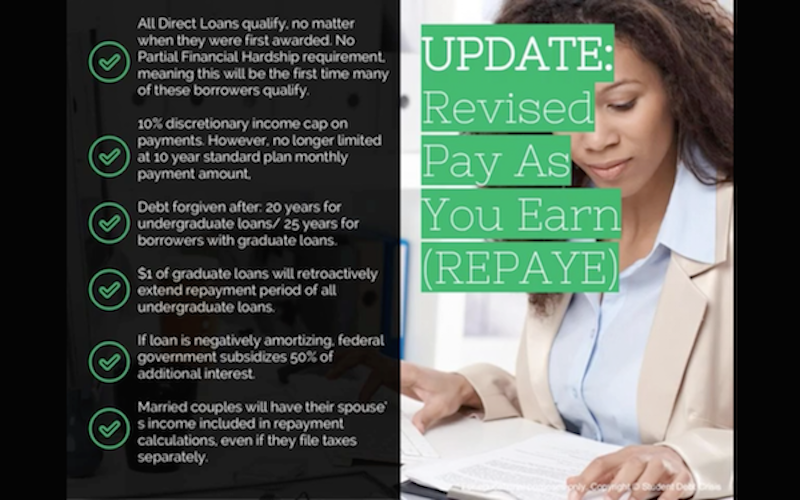
-
How to Apply
Now, the easy step. Once you have figured out whether or not you qualify and have your ducks in order, all you have to do is fill out the PSLF Employment Certification form! This can be printed, filled and submitted to the U.S. Department of Education FedLoan Servicing at P.O. Box 69184, Harrisburg PA 17106-9184, or faxed to 717-720-1628. Note that Section 4 of the form must be filled out by your employer.
While this only begins to scratch the surface, we encourage you all to dig into the rich resources to help reduce student loan debt! Below are some links that we found are useful, and if you have an extra hour and a half to spare, we recommend listening to the webinar. We thank CalNonprofits for hosting and for the presenters for sharing their expertise!
Additional Resources:
National Education Association’s Public Service Awareness FAQ’s
http://www.nea.org/home/60605.htm
Public Service Loan Forgiveness Certification Form (Section 8 goes into detail of requirements)
https://studentaid.ed.gov/sa/sites/default/files/public-service-employment-certification-form.pdf
National Student Loan Data System
Higher Ed, Not Debt
Student Debt Crisis
Full recording of the webinar:
https://calnonprofits.app.box.com/s/8spbum0tur4trbbfqensvwr1f1j9yhuk
East Bay Gives: What You Need to Know for 2016
/0 Comments/in News, Research and Development Lauren Benetua /by Lauren BenetuaOften we are part of a one- or two-person show in our organizations, and finding the resources to lead a full-fledged individual giving campaign can be an uphill struggle (and then some). The East Bay Gives (EBG) fundraising day and platform aligns with EAP/SFBA’s value of relevancy and proactivity. The crowd source and mobilization tactic is here to stay, and this is a great opportunity for small nonprofits (and fiscally sponsored projects) to try out with the support of a major local institution.
As January creeps right around the corner, so too does the special annual day of donations and fundraising! Orchestrated by the East Bay Community Foundation (EBCF), in partnership with electronic fundraising platform, Kimbia Inc, EBG presents a 24-hour day of prizes for nonprofits in Alameda and Contra Costa from community funders. From the East Bay Gives website from last year:
East Bay Gives 2015 is an opportunity to mobilize everyone in the East Bay on the same day for 24 hours. Last year, on May 6, 2014, from midnight to midnight, East Bay Gives raised more than $200k for 140 nonprofit organizations, and we’re excited about the response from our community that indicates we will be even more successful this year. Join us! Spread the word about East Bay Gives, and be sure your favorite nonprofits are registered so that you can give local on May 5, 2015.
Sound like something your organization can use? In case you missed their webinar on Friday, December 11th, here are some key takeaways that we at EAP/SFBA compiled for your convenience!
- Goals from the East Bay Community Foundation: EBG’s goal for 2016 is to raise $1 million from funders and donors in 24 hours. The prize pools will consist of $150k, which will be dispersed over the course of that day. EBCF also hopes to engage over 5k donors, and 500 nonprofits to register.
- How the prizes work and what it looks like: Two prizes each hour are granted. That’s 48 within the 24 hour giving day. There will be prize challenges each hour (i.e. last year’s 8-9am challenge: $1,000 each to the first five NPOs receiving a donation in the 8:00 AM hour). This year’s challenges are subject to change, but here’s a link to last year’s Prize Rules and List to use as a reference. There are also “Golden Tickets,” which are smaller, special prizes awarded at random. Think of this as a small lottery ticket.
- Why East Bay Gives? Registering with EBG provides an organization with an online vehicle if they don’t already have one. This platform is an opportunity for exposure and is a powerful way to gain a donor base through the EBG profile on the leaderboard, where there is a list of participating organizations. Your organization will be listed with a blurb, photo, links and all other pertinent information about you! Additionally, think of it as the difference between Black Friday and Cyber Monday: more people spend on the Monday, than they do on the Friday. Ergo (for better or worse), our culture is more likely to give online, and tend to give bigger donations online than in person.
- Requirements, Registration, Eligibility: First rule of fight club – you have to be a registered 501c3. The second rule of fight club – you can be fiscally sponsored by a 501c3. Educational or religious institutions are not allowed (bummer, but this is explained on their website). The good news is that there is no registration fee! Participating orgs must attend one orientation in person OR online, and must have a Facebook page. There will be “bootcamps” designed to help your org optimize things like board engagement strategy; social media tips/tricks/advice; workplan timeline and several others. Registration opens on January 4th, 2016 – March 15th, 2015. East Bay Gives takes place on May 3, 2016.
- Strategy is essential: Last year, organizations were able to receive prizes amounting to ~$40,000! While this seems like a competitive fundraising effort, it is not. Delegating a staff person with the capacity, and employing a strategy will maximize your chances at receiving the most prizes. It must be emphasized that this 24-hour day of giving requires a lot of time, energy and commitment. Though there has not been feedback about burnout, EBCF informs us that there are high levels of communications both internally and externally each week leading up to the day of giving in May.
Sounds exhilarating, right? Why not take a chance at getting an extra $50k of funding to start your organization’s New Year! The stakes are even higher this year, as the East Bay Community Foundation has improved upon the previous two years. There are tons of other notes and advice that can be found on the East Bay Gives website. It’s full of rules and FAQs – and be sure to get on their mailing list or ‘like’ them on FB to stay up-to-date with information about registration on January 4th, 2016! For further questions or clarifications, you can also contact the EBG team members Jeri Boomgaarden, Sarah Merkle, and Dawn Robinson at givelocal[at]eastbaycf[dot]org, or reach them by phone at (510) 836-3223.
We wish all those interested in participating the best of luck! And of course, we want all of our Emerging Arts Professional networks to receive nothing but the best, so if you are reading this, send this to your friends with orgs who can use some extra funds. I know I want all my co-founding, co-directing, co-conspirators–oops I meant collaborators to see the benefits of this process.
Happy fundraising, y’all, we hope all the strategies and donors come your way in the New Year.
Outcome-Oriented Philanthropy
/0 Comments/in Philanthropy, Research and Development /by AdminFormer Hewlett Foundation president Paul Brest defines outcome-oriented philanthropy as “philanthropy where donors seek to achieve clearly defined goals; where they and their grantees pursue evidence-based strategies for achieving those goals; and where both parties monitor progress toward outcomes and assess their success in achieving them in order to make appropriate course corrections.”
Mario Marino, co-founder of Venture Philanthropy Partners, puts it more succinctly: “It’s no longer good enough to make the case that we’re addressing real needs. We need to prove that we’re making a real difference.”
That’s from Marino’s (free!) 2011 ebook, Leap of Reason. In it, Marino advocates nothing less than a sector-wide revolution in which all nonprofits measure and manage their outcomes. He believes that soon funders “will migrate away from organizations with stirring stories alone, toward well-managed organizations that can also demonstrate meaningful, lasting impact.”
I see two main benefits to this trend:
- It encourages nonprofits to hold themselves accountable for the work they do. In a time of diminishing resources, it is morally right that we should meet a high standard of impact in order to be funded.
- It helps nonprofits develop language that translates better for the new generation of donors. Venture philanthropists and Silicon Valley entrepreneurs are important new players on the philanthropic scene. These are data-driven, results-oriented people, and we need to speak to them in terms they will understand.
Applying this to the arts can be challenging, though. Most of what I’ve read on the subject is geared toward education and social service nonprofits, where one can measure things like high school graduation rates, inmate recidivism, distribution of malaria nets.
But what are our outcomes in the arts and how do we measure them?
I had hoped to find some inspiration for this on the new website, Charting Impact. Launched in 2011, this site provides a free, standardized self-assessment tool for nonprofits to measure and communicate their effectiveness. However, it seems that almost none of the participants so far are in the arts and culture sector, and the few that
I was able to find fell a bit short of what I’d hoped to see.
Still, I think the idea behind Charting Impact is a good one. If anyone reading this finds an example of an arts group using it well (or is inspired to be the first!), I would love to hear about it.
Another point of entry into measuring artistic outcomes is the ongoing discussion about “intrinsic” versus “instrumental” impacts. A few years ago everyone seemed to be measuring the “instrumental impact” of the arts — the way in which the arts stimulate the local economy or improve student test scores, for example. However, in the last decade thought leaders like Adrien Ellis and the RAND Corporation have exposed the pitfalls of instrumental arguments for the arts, shifting the conversation instead toward their “intrinsic impacts” — the way that art makes audiences feel and enriches our lives.
Intrinsic impacts are tough to measure, though. It’s not obvious how to quantify a feeling and report on it to a funder! But the intrepid folks at Theatre Bay Area and WolfBrown have taken on the challenge. TBA’s 2012 publication Counting New Beans got the conversation started. Then WolfBrown carried the work even further, launching a whole website and line of services aimed at helping arts nonprofits learn to measure and evaluate their intrinsic impact. If you want to understand what it means to measure art’s intrinsic impact, those two resources are the place to start.
Regardless of how you choose to approach the issue, the ultimate goal is to find some meaningful way to evaluate your organization’s outcomes, and then use that information to make necessary course corrections and to communicate with donors.
At the organizational level that means asking ourselves: Is my organization having the impact that it ought to have? Are the things we’re doing actually achieving the outcomes we set out to achieve?
Furthermore, it means developing consistent methods for answering these questions, being brutally honest about the answers and, most important, making changes if at any point we fall short of achieving our goals.
Whether this trend serves the arts well when it comes to getting grant money will depend largely on how funders implement it. Hopefully they will follow the lead of Marino
Marino, who writes in Leap of Reason: “We’ve learned that we cannot impose our support for this type of change process, that we have to give our partners the time and space to do it their way, not our way.”
Amen!
Don’t miss parts one (improved assessment tools) and two (building vs. buying) in Carrie’s series on trends in philanthropy!
About Carrie Blanding
Carrie Blanding is currently on a research sabbatical in which she gets to blissfully romp through the most interesting nonprofit literature every day. She is particularly fascinated by organizational sustainability, personal resilience, effective philanthropy, and management theory.
Previously, she has been executive director of the the San Francisco Contemporary Music Players, and co-founder/principal of Next Big Thing Children’s Theatre. She earned her bachelor’s degree, summa cum laude, in comparative literature from the University of California, Berkeley, and received the department award for academic achievement.
An avid singer, Carrie has at times been a member of the San Francisco Symphony Chorus, a jazz vocalist, and a singer-songwriter pouring her heart out at your neighborhood bar.
Learning the Difference between Building and Buying
/0 Comments/in Philanthropy, Research and Development /by Admin This is part two in a three-part series by Carrie Blanding on emerging trends in philanthropy.
This is part two in a three-part series by Carrie Blanding on emerging trends in philanthropy.
If you haven’t yet read George Overholser’s seminal piece “Building Is Not Buying,” you should stop everything and do it now. The essay is only ten pages long, but it packs a punch!
In the piece, Overholser encourages nonprofits and their funders to distinguish between growth capital and revenue-like funding, and to track this income separately in their budgets.
Once you get the basic definitions down, tracking capital growth and revenue-like funding differently is a very simple idea, but the implications for philanthropy are huge.
Growth capital (“building” money) generally involves one-time grants in which the donor invests to help you get started but doesn’t intend to keep giving at the same level in future years. Think of this like start-up capital invested in a for-profit business.
Revenue-like funding (“buying” money) is income that could reliably be sustained or replaced as part of the organization’s regular operating budget. It buys a service or project, in the same way that customer purchases sustain a for-profit business.
This simple-yet-powerful distinction puts a whole new lens on donations and internal accounting. It teaches funders to be more realistic about their goals, time frame, and gift amounts. It teaches funded organizations to budget more effectively and to better plan new growth initiatives.
For example, an organization I used to work for once received a one-time, nonrenewable grant to overhaul its marketing department. It was meant to be an investment that would pay for itself when the grant period was over because our improved systems would bring in new income. But the grant amount was small and the time-frame short, relative to the task at hand.
Basically, it was a typical “building” style grant, but with “buying” level resources. Looking back, it’s not surprising that the results fell short of what we had envisioned. I dream of going back in time and giving everyone involved a copy of Overholser’s article (although I don’t think it had been written yet).
The article would have helped the funder to design the grant more realistically, and maybe we would have had more success in achieving our goals.
Fortunately, this knowledge is now available and it’s starting to spread. The Nonprofit Finance Fund has developed a whole set of services around Overholser’s notion of building versus buying, including a series of publications that specifically apply to the arts.
Thanks to the Doris Duke Foundation, arts organizations are leading the way when it comes to implementing these new ideas. Ten arts organizations were among the earliest beneficiaries of cutting-edge “change capital” grants aimed at building their organizations (and our knowledge) in a meaningful way. The lessons learned from these first grants were published just a few months ago.
Whether or not your funders are thinking in these terms yet, just learning the basic concepts in Overholser’s article will give you a powerful new perspective on fundraising, income, and budgeting.
Up next: An optimistic look at the challenges and benefits of outcome-oriented philanthropy. And don’t miss part one about improved assessment tools for donors.
About Carrie Blanding
Carrie Blanding is currently on a research sabbatical in which she gets to blissfully romp through the most interesting nonprofit literature every day. She is particularly fascinated by organizational sustainability, personal resilience, effective philanthropy, and management theory.
Previously, she has been executive director of the the San Francisco Contemporary Music Players, and co-founder/principal of Next Big Thing Children’s Theatre. She earned her bachelor’s degree, summa cum laude, in comparative literature from the University of California, Berkeley, and received the department award for academic achievement.
An avid singer, Carrie has at times been a member of the San Francisco Symphony Chorus, a jazz vocalist, and a singer-songwriter pouring her heart out at your neighborhood bar.
My Favorite New Trends in Philanthropy Part I
/0 Comments/in Philanthropy, Research and Development /by AdminWe’ve all been there: you’re at a conference, or a fund development meeting, or coffee with a colleague, and the conversation turns to What Is Wrong With The Current Funding System. We commiserate about the perils of chasing program funding. We lament the scarcity of general operating support. We share stories of insane reporting requirements. . . .
But lately when these conversations come up I find myself irresistibly bringing up the bright side. Why? Because for the past six months I’ve been reading a lot about philanthropy, and the beautiful truth is that I’m seeing some good ideas out there. Some of them are still just a twinkle in the eye of an academic, but others are starting to take hold and influence the way funding gets distributed.
So let’s take a little break from thinking about what’s not working, and focus on a few encouraging trends in the philanthropic sector. In this three-part series, I’ll write about a few of my favorites: improved assessment tools for donors, smarter thinking about capital, and outcome-oriented philanthropy.
Part 1: Improved Assessment Tools for Donors
Remember when organizational effectiveness was determined by how much a nonprofit spent on overhead? Well ring the bells, because that clumsy old metric is on its way out! The current trend is to look beyond simplistic ratios and empower donors with more well-rounded assessment tools.
The movement away from overhead ratios has been making headlines lately. By now we’ve all seen Dan Pallotta’s TED talk on the subject. Much more exciting, in my opinion, is this open letter denouncing the “overhead myth,” signed by the CEOs of Guidestar, Charity Navigator, and BBB Wisegiving Alliance.
In their words, the letter “marks the beginning of a campaign to correct the common misconception that [overhead] … is, on its own, an appropriate metric to evaluate when assessing a charity’s worthiness and efficiency.”
While the campaign is new, the idea is not. Various foundations, consultants, and information providers have been thinking hard about this issue for some time. That’s good news because it means that several new and improved online assessment tools have already been (or are being) developed.
Perhaps the most accessible of these is Philanthropedia. This site allows anyone to view free ratings of nonprofits based on peer assessments. Developed at the Stanford Graduate School of Business, launched in 2009 with funding from the Hewlett Foundation, and acquired by Guidestar in 2011, this young site is a testament to how the goal of improving donors’ access to information is supported across the philanthropic sector.
The arts are well represented on Philanthropedia, with twenty-one rankings of Bay Area arts nonprofits, and seventeen national rankings. The site only ranks its “top nonprofits,” refraining from singling out any groups as not worthy of support. It does, however, allow users to view the peer comments (both positive and negative) that it receives for non-ranked nonprofits.
Another new offering from Guidestar, with the Nonprofit Finance Fund, is Financial SCAN. Launched in 2012, this tool attempts to evaluate an organization’s financial health over the long term, in a more comprehensive way than ever before. Priced at $2,500 a year, Financial SCAN appears to be primarily intended for large foundations and financial advisers.
Charity Navigator, a ratings site available to the general public, is a bit behind the times but poised to catch up. Currently this site only rates nonprofits on financial health, accountability, and transparency, but they are working towards adding “results reporting” (basically impact measurement) to their evaluation criteria by 2016.
If you’re interested in getting a bigger-picture view of how this trend can improve the nonprofit world, check out this 2008 white paper from the Hewlett Foundation. In the report, the foundation describes its vision for a bustling nonprofit marketplace in which individual donors, empowered with better information, efficiently direct their resources to the best nonprofits. We’re not there yet, but we seem to be moving in the right direction.
Stay tuned for my next installment: an ode to growth capital!
 About Carrie Blanding
About Carrie Blanding
Carrie Blanding is currently on a research sabbatical in which she gets to blissfully romp through the most interesting nonprofit literature every day. She is particularly fascinated by organizational sustainability, personal resilience, effective philanthropy, and management theory.
Previously, she has been executive director of the the San Francisco Contemporary Music Players, and co-founder/principal of Next Big Thing Children’s Theatre. She earned her bachelor’s degree, summa cum laude, in comparative literature from the University of California, Berkeley, and received the department award for academic achievement.
An avid singer, Carrie has at times been a member of the San Francisco Symphony Chorus, a jazz vocalist, and a singer-songwriter pouring her heart out at your neighborhood bar.
EAP SF/BA Mission
OFFICE HOURS
SAT & SUN: Closed
p. (415) 209-5872


